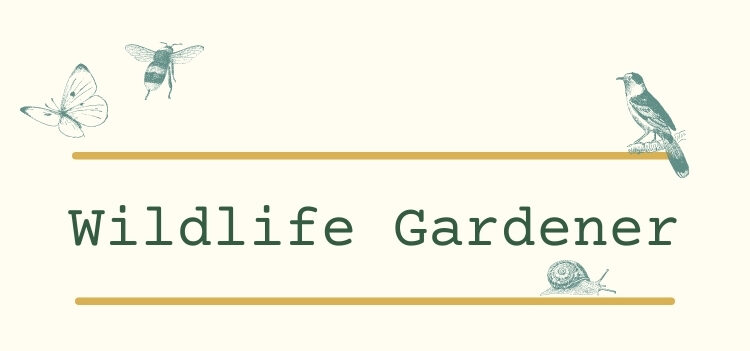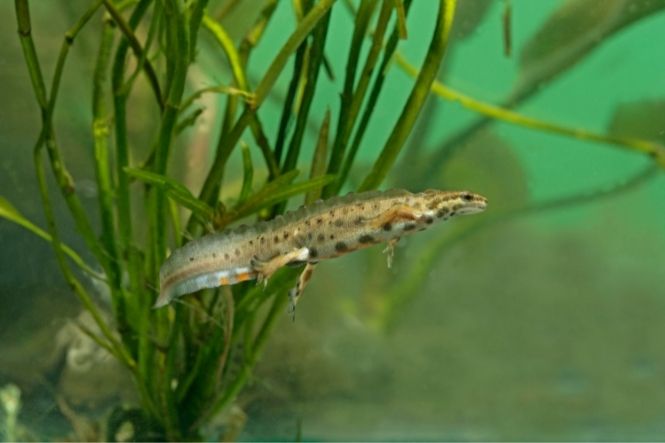Firstly, it’s important to remember that all newts are partly protected species and the crested newt is fully protected so you should never remove them from the wild to bring back home to your garden. However, if you create the right environment, you stand a good chance of being able to attract newts to your garden pond for your wildlife gardening.
Creating The Right Gardening Environment For The Newt
It’s part of a newt’s natural behaviour to be attracted to ponds and to wander around looking for pond-type environments to colonise. As amphibious creatures, when it’s not mating season, adult newts like places to hide and shelter which are damp so building a loose rockery in your wildlife garden near to a pond is an ideal place for them. You’ll also often find them sheltering under logs. The other prime concern for newts is that they have a safe place upon which to lay their eggs when they mate which is usually between April and June. Ideal gardening plants for newt ponds include water forget-me-nots, watercress, water speedwell and flote-grass. They will choose to lay their eggs in leaves which have become folded over and you’ll be able to notice where they’ve laid them as you’ll be able to see a tiny jelly like egg hidden inside the fold.
Make Sure You Have No Fish In Your Pond
If you want to attract newts to your garden pond, it should be a pond that does not contain any fish as they will eat the baby newts as soon as they hatch. Therefore, you either need to have a pond specifically to attract the likes of newts, toads and frogs containing no fish or, alternatively, build an additional pond next to your fish pond where the baby newts will be safe.
How To Handle Newts In Your Garden
Although you should really let wildlife be and allow newts to simply get on with the business of a ‘being a newt’, children especially can derive a lot of pleasure and knowledge out of handling a newt in a wildlife garden. This is quite acceptable so long as you’re gentle with them, keep your hands wet when handling them and don’t take them away from the pond for longer than five minutes.
Recognising The Various Species Of Newt
Britain has 3 different types of newt. These are:
- Crested Newt – the largest and rarest of the species which has a crest
- Smooth or Common Newt – this has an orange belly with dark spots on its throat
- Palmate Newt – this has a yellow belly and no spots
Feeding Newts In Your Garden
You don’t really need to worry about feeding newts as they are naturally adept at being drawn to natural or man-made environments such as the wildlife gardens described above where they’ll have no problem finding their own food. However, if you have the urge to help them along in your garden, you can always buy supplies of daphnia, bloodworm or brine shrimp from any tropical fish store. It’s also important to remember that a pond is best left in its natural state so you shouldn’t bother using a filter as this is designed to prevent the build up of algae which serve a fundamental purpose of providing newts with an abundance of water insects which the newt thrives on.
Frogs and newts can co-exist in relative harmony although both of them will eat their own and each others’ tadpoles in your wildlife garden. After mating, you’ll probably be able to see the baby newts emerge from around the end of June where they’ll remain in the garden pond until about August onwards which is the time they’ll start heading for land to find hiding places in which to hibernate for the winter months and there they’ll remain not to emerge again until around the following February. Therefore, you need to be a little cautious when moving things around the pond in your wildlife garden over the winter period to avoid disturbing them. The life cycle comes full circle between 2 to 3 years when the baby newts become fully fledged adults and are able to breed themselves.

